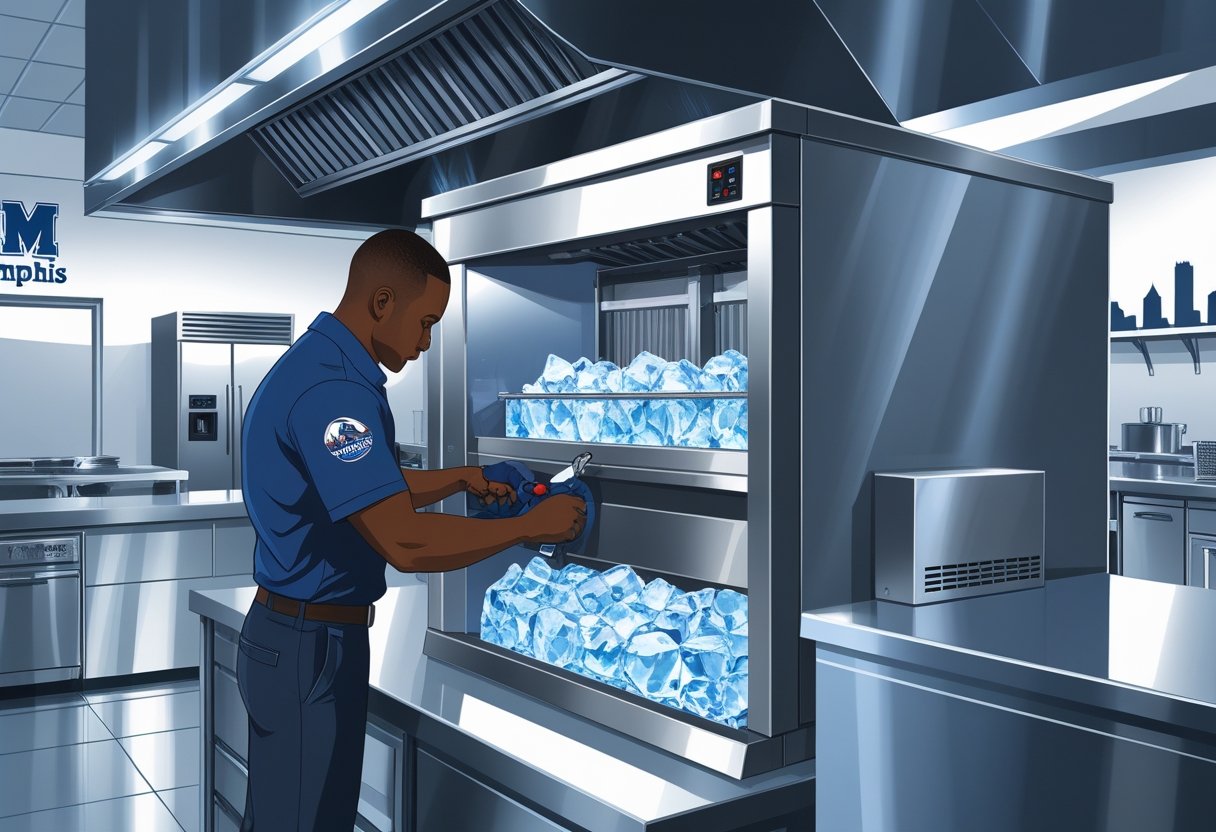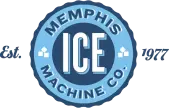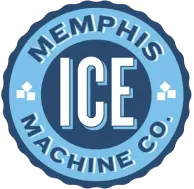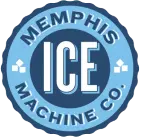proudly serving
the mid-south
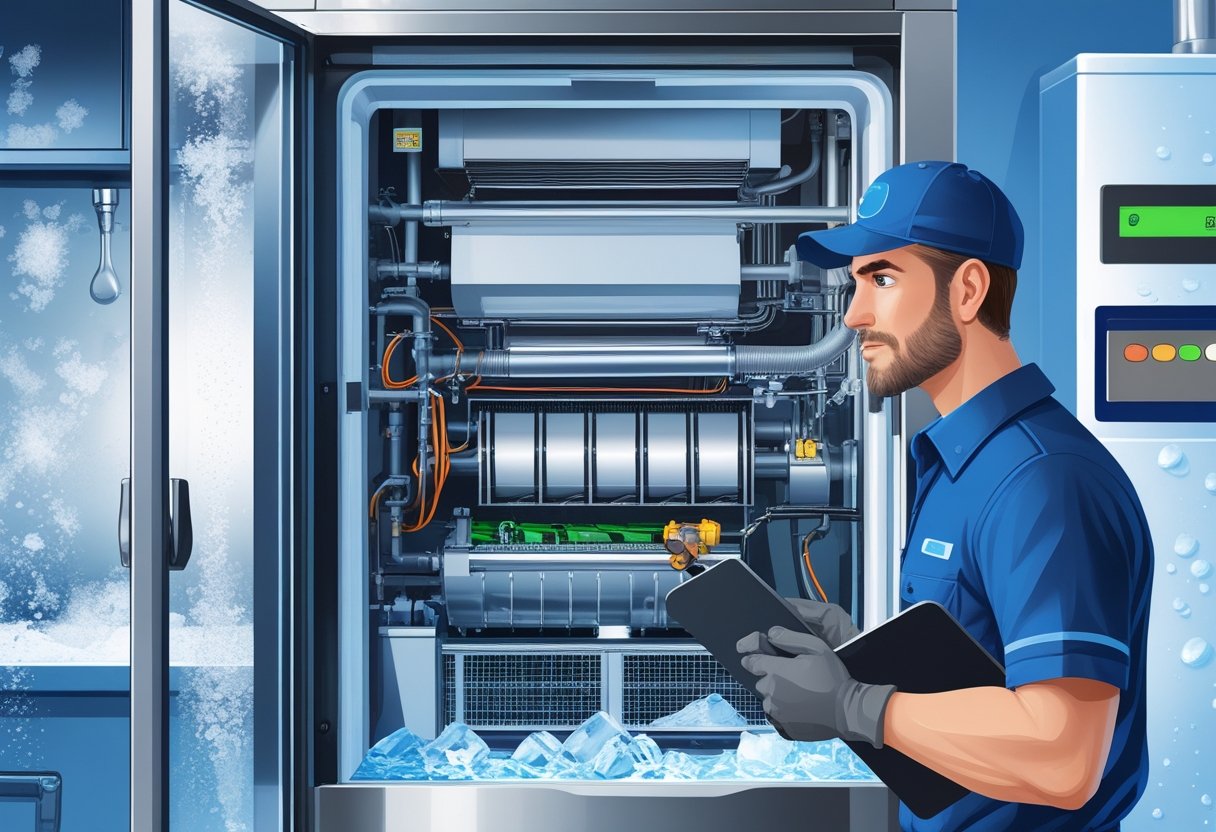
Why Is My Ice Machine Slow Causes and Quick Fixes to Improve Ice Production
If your ice machine is running slower than usual, it’s often due to a few common issues like incorrect temperature settings, low water pressure, or clogged filters. Keeping your freezer at the right temperature and ensuring a consistent water supply are key to maintaining steady ice production. Ignoring these basics can lead to delays that disrupt your business flow.
At Memphis Ice, we’ve seen many customers face slow ice machines caused by these preventable factors. Regular maintenance and timely repairs can make all the difference in keeping your ice supply reliable, especially during Memphis’ hot months when demand spikes. Understanding these causes helps you take control before the problem worsens.
Whether you rely on commercial ice machines for your restaurant, bar, or healthcare facility, slow ice production can slow your entire operation. Knowing what to look for and when to call for professional service keeps your business running smoothly without unexpected downtime.
Primary Reasons Your Ice Machine Is Slow
Several factors can limit how quickly your ice machine produces ice. Issues with water supply, freezer temperature, or filters often cause slow ice production. Identifying these can help you get your machine back to full speed without unnecessary downtime.
Low Water Supply
Your ice machine needs a steady, adequate water flow to make ice efficiently. If the water supply is low or fluctuates, ice production will slow. This could be due to a kinked or partially closed water line, low water pressure from your building’s plumbing, or even frozen water inlet tubes.
Check that water valves are fully open and there’s no obstruction or damage to the supply line. If pressure is low, you might need a pressure booster or to contact your water provider. Regular inspection of water lines can help prevent slow production caused by restricted flow.
Incorrect Temperature Settings
Ice machines rely on proper freezer temperatures to freeze water fast. Setting your freezer warmer than about 0°F (-18°C) delays ice formation. Temperatures above this can cause slow freezing cycles or partial melts that slow down production overall.
Keep your freezer between 0 and 5°F (-18 to -15°C) for optimal ice making. Extreme outside temperatures or frequent door openings can raise internal temperatures, so monitor and adjust settings as needed. Proper temperature control ensures your machine runs efficiently without added strain.
Clogged Water Filter
A dirty or clogged water filter restricts water flow to your ice machine. This reduces the amount of water available per cycle, slowing down ice output. Filters should be replaced regularly—usually every six months or per manufacturer recommendation—to maintain water quality and flow.
If ice production drops suddenly, inspect the filter and replace it if it looks dirty or clogged. Bypassing the filter temporarily for testing can confirm if it’s the root cause. Keeping filters clean protects your machine and guarantees consistent ice production.
For further assistance on maintaining your commercial ice machine or scheduling service, Memphis Ice can help you stay on top of ice machine maintenance and prevent issues before they impact your business.
Ice Production and Freezing Cycle Issues
Slow ice production often traces back to problems in the freezing cycle and related components. Ensuring your ice machine maintains proper temperatures and that all parts function correctly is key to efficient ice output.
Faulty Thermostat
Your ice machine relies heavily on its thermostat to control the freezing temperature. If the thermostat malfunctions, it may not trigger the freezing cycle at the right time or maintain the optimal cold temperature. This delay or inconsistency directly slows ice formation.
A thermostat stuck too warm prevents the water from freezing quickly, while one that fails to shut off could cause overheating, damaging ice quality. Checking the thermostat’s calibration and replacing it when it shows signs of failure can restore proper freeze times. Memphis Ice technicians recommend routine temperature checks to catch this early and avoid costly downtime.
Malfunctioning Ice Maker Components
Several parts work together to freeze water, release ice, and prepare the machine for the next cycle. If any component, like the water inlet valve or the mold heater, malfunctions, ice production slows or stops.
A stuck water inlet valve reduces water flow, causing smaller or fewer ice cubes. The mold heater helps loosen ice; if faulty, cubes won’t release properly, delaying the entire cycle. Mechanical parts like motors or sensors might also wear down with time. Regular inspections by Memphis Ice professionals help pinpoint these issues, ensuring your machine runs smoothly during busy periods.
Environmental and Usage Factors
Several external conditions and how you use your ice machine can slow down ice production. Temperature control, demand levels, and how often the machine is accessed all play significant roles.
Room Temperature Impact
Your ice machine’s environment strongly affects ice-making speed. Higher room temperatures mean your machine has to work harder to freeze water. This can extend the freezing cycle and reduce output.
If the area where your ice machine sits is consistently above 75°F, it may struggle to maintain optimal performance. Proper ventilation and keeping the machine away from heat sources like ovens or direct sunlight help maintain cooler operating conditions.
Regular servicing by Memphis Ice ensures your machine adapts to environmental factors, keeping it efficient no matter the season or location within your facility.
High Ice Demand
When ice demand is consistently high, your machine might not produce ice fast enough to keep up. Continuous use exhausts the machine’s capacity, especially during peak hours.
If your business requires large volumes of ice, consider monitoring usage patterns and possibly upgrading to a higher capacity model or renting additional machines temporarily.
Using an ice machine beyond its recommended capacity shortens equipment life and leads to slower ice production. Planning ahead with Memphis Ice can help avoid these issues by matching your machine to your actual demand.
Frequent Door Openings
Every time the ice storage bin or freezer door opens, warm air enters, raising internal temperature. This forces the machine to spend extra time lowering the temperature before it can resume normal ice production.
Minimize door openings during busy periods to maintain consistent temperatures inside the machine. Educate staff on reducing frequent access unless necessary to keep cycles efficient.
Using automatic dispensers or ice bins with insulated doors can also limit temperature fluctuations, speeding up the ice-making process.
Maintenance and Cleaning Concerns
Keeping your ice machine clean and well-maintained is crucial to ensure steady ice production. Addressing deposits and blockages early prevents slow ice cycles and costly repairs.
Scale and Mineral Build-Up
Hard water can cause scale and mineral deposits to form inside your ice machine’s water lines, evaporator, and ice mold. This build-up restricts water flow and heat exchange, slowing down ice formation.
Regular descaling is necessary. Use manufacturer-recommended cleaning solutions to dissolve deposits without damaging components. Schedule this cleaning based on your water hardness and machine usage.
Ignoring scale can lead to premature parts failure or inefficient ice production. Monitoring water quality and replacing filters will also limit mineral accumulation. Keeping this under control ensures your ice maker runs smoothly season after season.
Debris or Blockages
Debris like dirt, sediment, or ice jams in the water inlet or ice chute can cause operational delays. These blockages reduce water supply or prevent ice from ejecting properly, causing the machine to pause and restart its cycle.
Perform routine inspections of all accessible parts, especially the water inlet valve and ice delivery chute. Remove any visible debris immediately. Make sure seals and gaskets are intact to stop contaminants from entering.
If your machine continues to slow despite cleaning, it may need a professional inspection. At Memphis Ice, we’ve seen how simple debris removal can restore machine speed quickly, saving downtime in busy environments.
Ways to Increase Ice Production Speed
Improving your ice machine’s output often depends on fine-tuning temperature, ensuring clean water flow, and proper ventilation. Each of these factors directly impacts how quickly ice forms and how much your machine can produce efficiently.
Adjust Temperature Settings
The temperature inside your ice machine’s freezer compartment plays a critical role in ice production speed. If it’s too warm, the cycle takes longer because ice melts or doesn’t freeze properly. Aim to keep the temperature between 0°F and 5°F for optimal freezing.
Check your thermostat and adjust if necessary. A setting too cold can also cause problems by freezing water supply lines, so balance is key. In commercial settings like restaurants or bars, maintaining precise temperatures prevents delays during busy hours.
Lower ambient temperatures in the room housing the ice machine help too. If the environment is consistently above 70°F, consider improving cooling or relocating the unit to avoid heat slowing down the ice-making process.
Replace Water Filter
A clogged or dirty water filter restricts water flow, leading to slower ice production. Water must flow freely and cleanly for efficient freezing cycles. Filters should be replaced at least every six months or sooner in areas with hard or heavy mineral content.
To prime the new filter, run water through it several times to clear air and contaminants. This boosts flow rate and prevents blockages inside the machine. Neglected filters can also cause poor ice quality, affecting your business’s reputation.
Regular water filter maintenance is one of the simplest ways to keep your ice machine working like new. Memphis Ice recommends staying on top of this as part of your routine commercial ice machine service.
Optimize Placement and Ventilation
Proper placement of your ice machine affects airflow around the unit and prevents overheating. Avoid tight spaces or spots near heat sources like ovens or direct sunlight. Limit dust and debris buildup by situating the machine in a clean, ventilated area.
Clearance around vents is essential for proper heat dissipation. Check that the vents are not blocked by walls, shelving, or boxes. Good airflow prevents the compressor from working too hard and slows wear on parts.
If ventilation is poor, you might notice increased cycle times and higher energy use. Simple adjustments like moving the machine away from heat or improving room ventilation can noticeably speed up ice production and extend equipment life.
For expert advice tailored to your Mid-South business needs, Memphis Ice remains ready to support your commercial refrigeration and ice machine maintenance.
Frequently Asked Questions
Ice makers can slow down for various practical reasons like temperature settings, water supply issues, or clogged filters. Understanding these specific causes helps you identify and fix the problem faster, whether it’s a commercial unit or a household refrigerator.
What are common reasons for an ice maker to produce ice at a slower rate?
Your ice maker may be slow due to improper freezer temperature, usually set too high to freeze water quickly. A low water flow or blocked water filter can also restrict the amount of water filling ice trays. Mechanical issues, like a faulty water inlet valve or worn components, can affect the freezing cycle duration.
How can I troubleshoot a slow ice maker in a commercial appliance?
First, check that the water supply line is unobstructed and delivering adequate pressure. Make sure the freezer temperature is maintained at or below 0°F (-18°C). Regular cleaning of water filters and ice molds prevents buildup that slows production. If these don’t help, inspect for mechanical wear or call a Memphis Ice professional for a detailed diagnosis.
What steps should I take if my Whirlpool refrigerator’s ice maker is slow?
Verify the freezer temperature is between 0°F and 5°F (-18 to -15°C) for optimal performance. Replace or clean the water filter every six months to ensure proper water flow. Check the ice mold and ejector arm for any ice buildup that might obstruct the cycle. Resetting the ice maker or inspecting the water inlet valve may also resolve common delays.
Are there specific solutions for a slow Frigidaire ice maker?
Frigidaire units often slow due to poor water pressure or clogged filters. Confirm the water line is connected and supplying enough pressure. Clean the filter and check the ice mold sensor, which can sometimes misread cycles, causing delays. Adjust freezer temperature and defrost the unit if frost buildup occurs on the evaporator coil.
What factors could cause a countertop ice maker to operate slowly?
Countertop models rely heavily on ambient temperature and water quality. High room temperature or low water levels can extend freeze time. Regularly clean internal filters and remove mineral deposits from the water reservoir to maintain fast ice production. Avoid overfilling the machine and ensure proper ventilation around the unit.
How can I resolve slow ice production in a GE refrigerator ice maker?
Confirm the freezer is set to a temperature between 0°F and 5°F (-18 to -15°C). Check and replace the water filter every six months to avoid clogs. Ensure the water inlet valve is functioning properly and water pressure meets manufacturer recommendations. Clearing ice jams in the dispenser chute and inspecting the ice mold heater can also improve speed.
If you need help maintaining or repairing your commercial ice machine, Memphis Ice provides trusted service throughout the Mid-South. Talk to an expert today to keep your ice production steady and reliable all year round.
Recent News
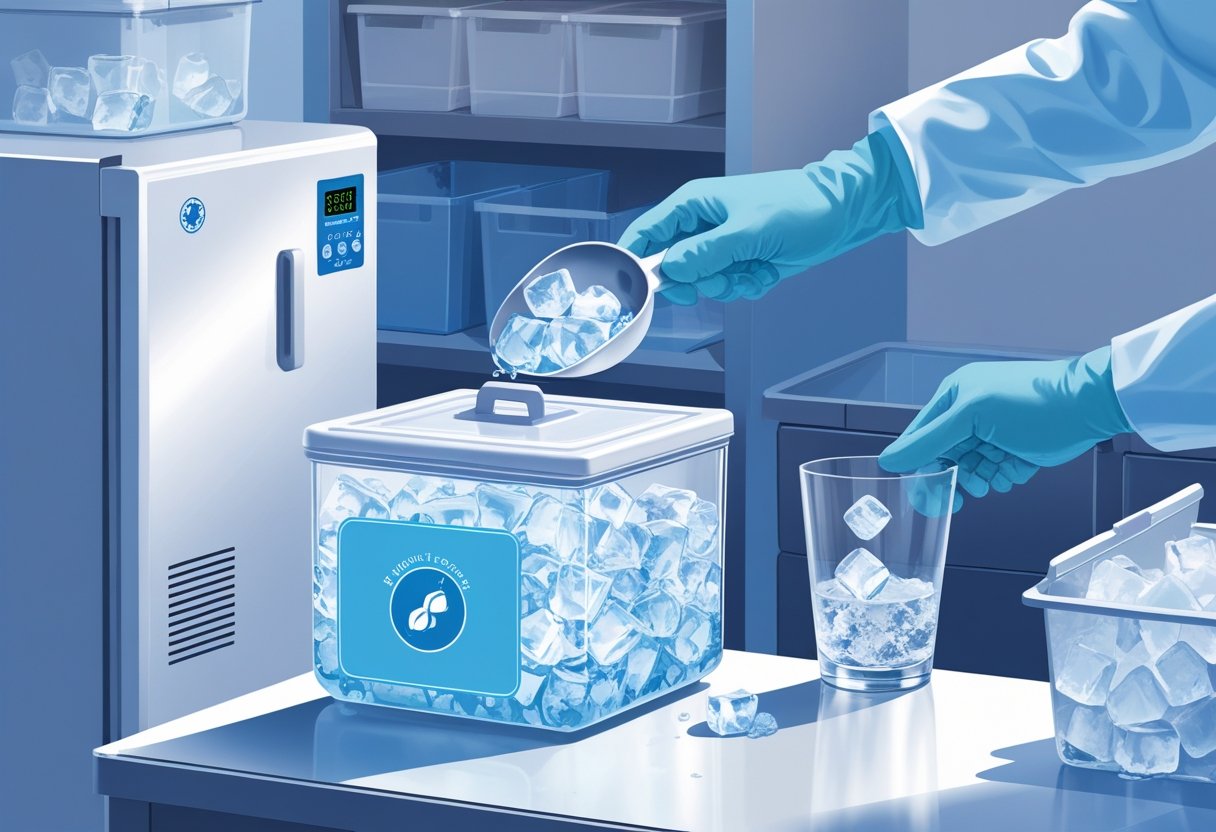
Best Practices for Storing Ice to Maintain Purity and Extend Shelf Life
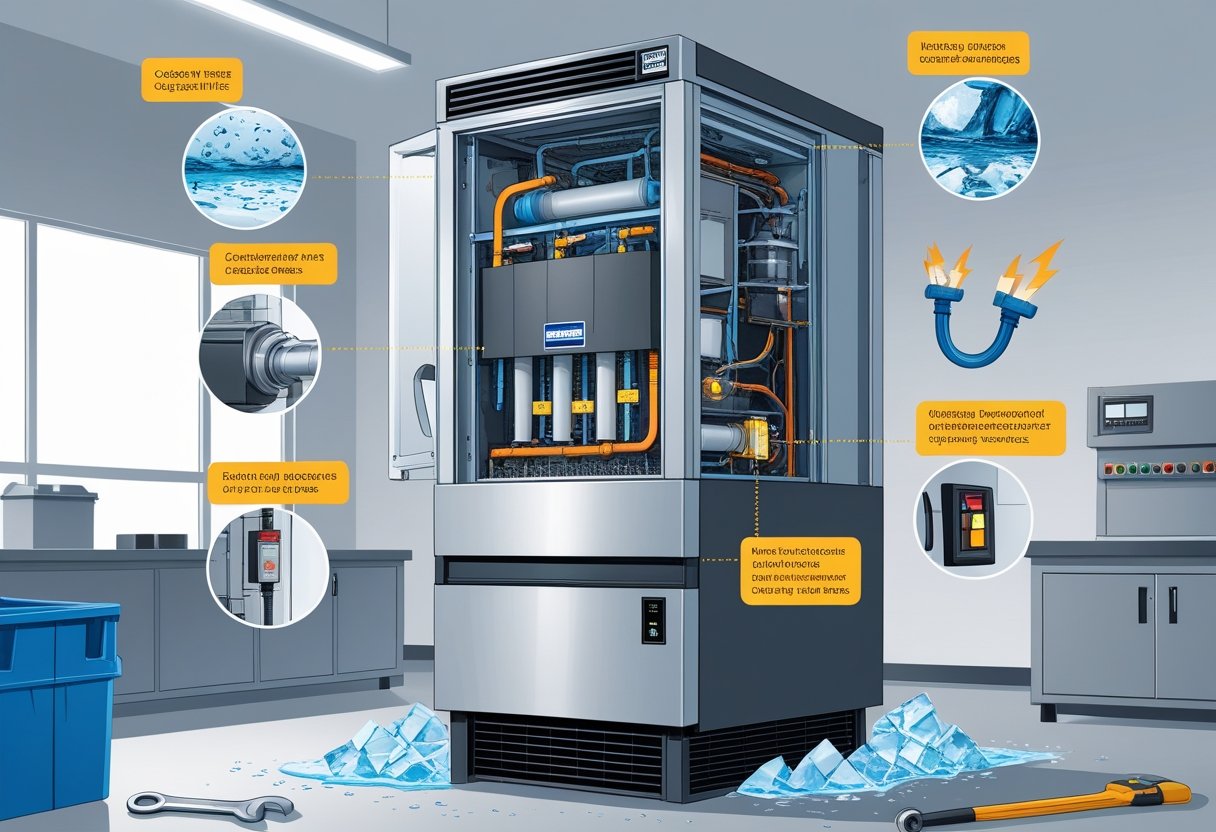
Top Reasons Ice Machines Fail and How to Prevent Costly Breakdowns
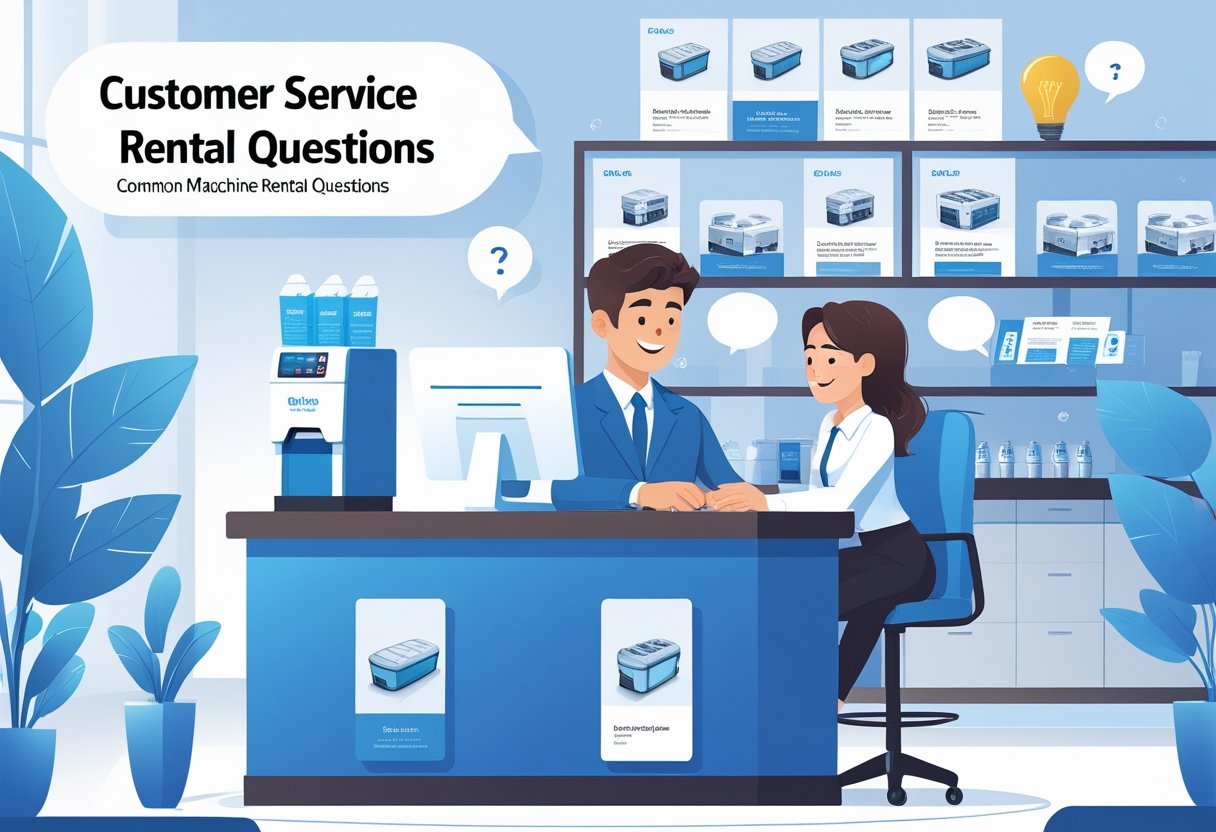
Common Ice Machine Rental Questions Answered for Event and Business Needs
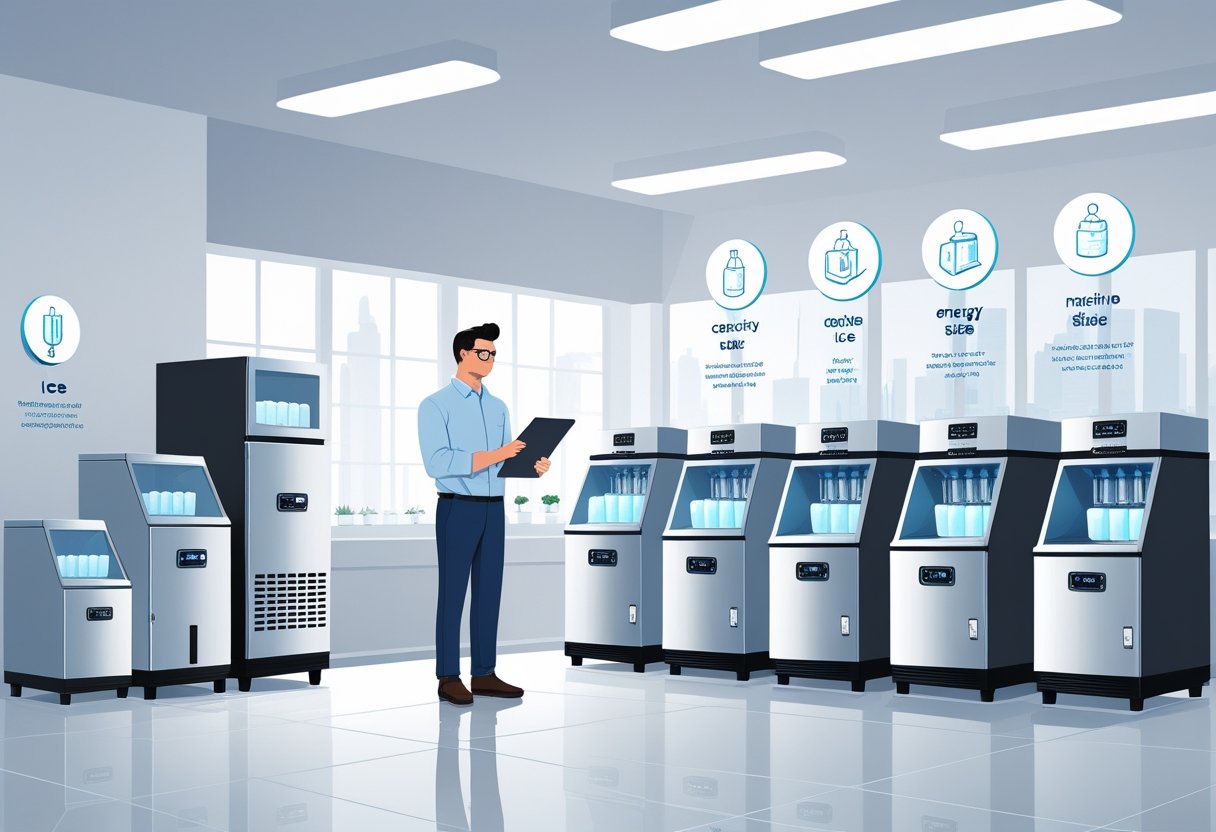
How to Choose a Commercial Ice Machine for Optimal Efficiency and Reliability
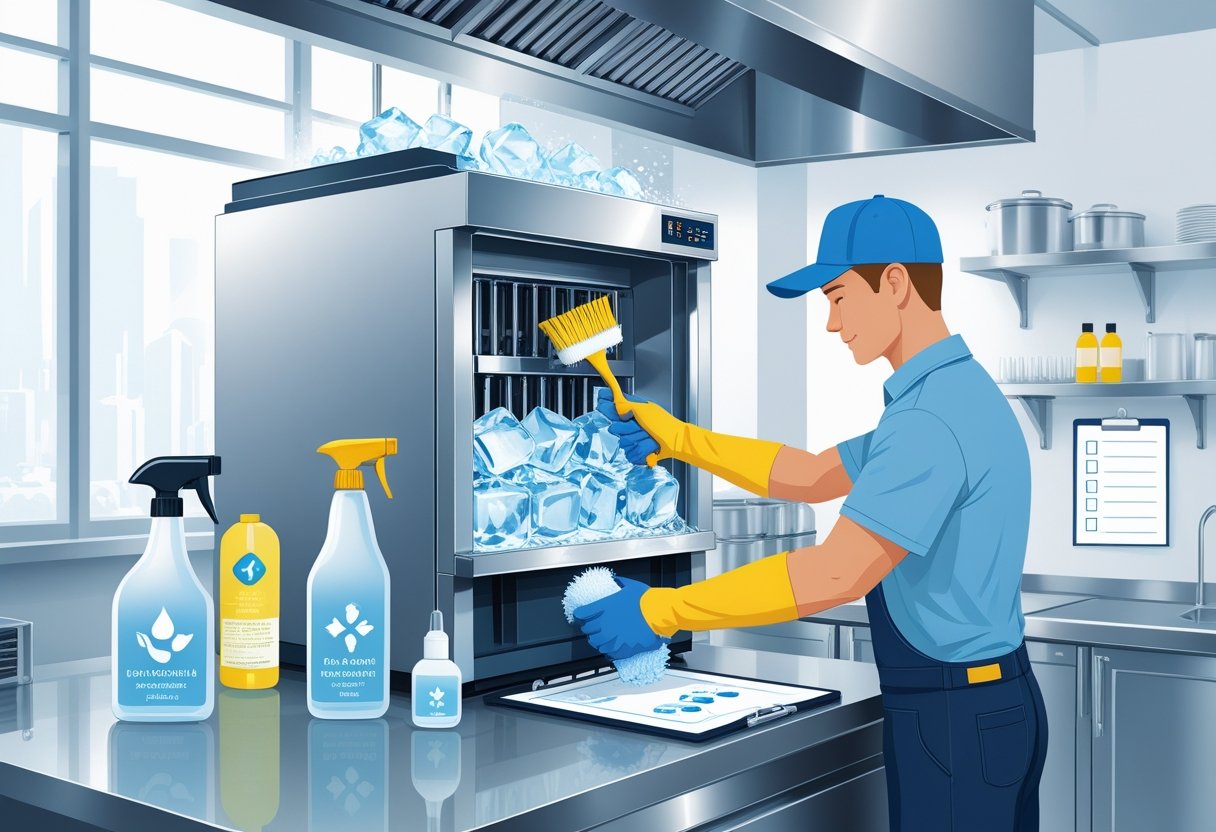
Importance of Routine Ice Machine Cleaning for Health and Efficiency Maintenance
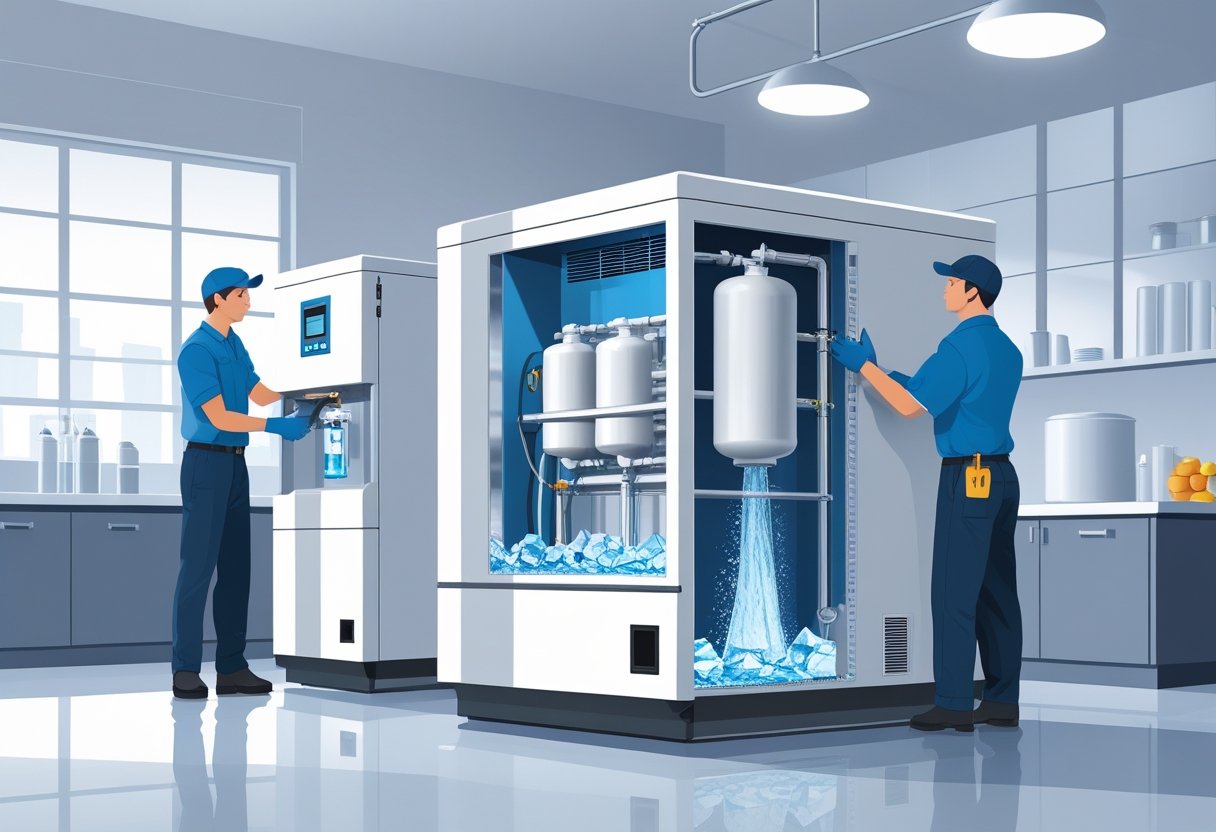
Do Ice Machines Need Water Filters for Optimal Performance and Longevity
